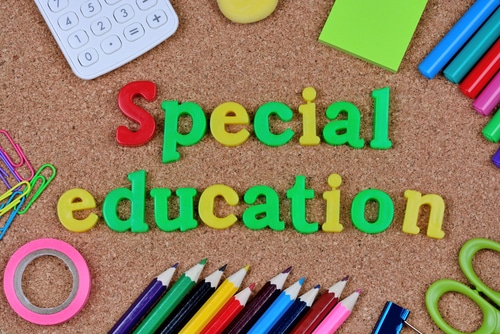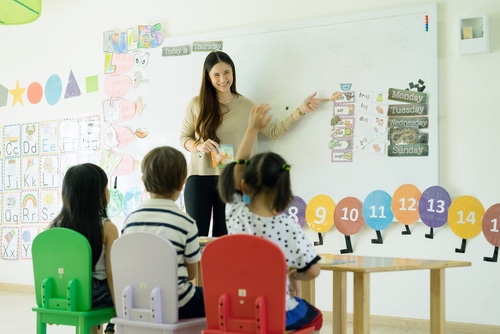As a special education teacher, a big part of your job is bringing together lots of people and lots of ideas to help figure out what’s best for a certain child in the classroom. That’s called “teaming,” and it is GREAT.
Who am I Teaming With?
Often one child’s education will involve several professionals as well as family members. Typically, as a special educator, you will work together with a general educator, therapists (like a speech therapist, occupational therapist, and/or physical therapist, among others), and family members. The child may also have a paraprofessional (individual aide) who is part of your team as well.
Start Strong with Teaming
Begin the school year by establishing strong relationships with each person on your team. Some of these will stay the same year after year if you stay at the same school, but some, like parents, will be new relationships to build each year. Communicate regularly with each person, and take the time to talk about non-school things, too. What does the speech therapist like to do for fun? What did Max’s mom do last weekend? Has the general educator tried that new restaurant that just opened? This way, when disagreements arise, you have a relationship to fall back on to help you get through it. Everyone involved has learned to communicate ahead of time.
Be Willing to Learn — and Teach!
The key to teaming is learning from one another. Getting “territorial” is one of the main reasons for breakdowns in team relationships, which, of course, doesn’t help the child! When a team is working well, members teach each other about their roles, so more people can perform those tasks well. For instance, the occupational therapist might teach the special educator how to use a special weighted pencil with a student during writing tasks. The special educator might teach the general educator how to use trains, which Jeremy LOVES, as a part of lessons to get him motivated. The parent might teach the paraprofessional the strategy she uses for getting Mya to hold her hand crossing the parking lot. By sharing knowledge with each other, the child has more people who can help her succeed!
Teaming Strategies
Depending on your school and your schedule, you may or may not be able to meet regularly as a team. At a minimum, the team will meet twice per year for IEP (Individualized Education Program) Meetings. Meeting more frequently is great if you can make it happen! If not, make sure to communicate regularly and have one-on-one meetings when needed.
Team members will disagree on strategies — that’s okay, don’t take it personally! Keep your good communication intact and brainstorm different solutions. When choosing new strategies, make sure everyone is on board. Consistency is super important, especially for kiddos with special needs. Before you decide that a strategy isn’t working, make sure everyone involved is trying the strategy earnest for at least two weeks before you reassess.
When it is done well, teaming is so wonderful for kids with special needs (and for that matter, typically developing kids, too!). Teamwork makes the dream work! Group high five!




